What is Humidity?
The temperature of a place is mainly controlled by the amount of heat it absorbs form the Sun. another factor is altitude (how high the land is). Areas at very high altitudes are colder than the areas at sea level. The distance from the sea also affects temperature. The sea has a moderating effect. You can see how it works in the first project. Water takes more time to heat up than the land, but hold heats for much longer. Therefore, summers are coolers and winters milder on the coast than inland.
A temperature of 700 F in the Caribbean feels much hotter than 700 F in Egypt. This is due to humidity-the amount of water vapor in the air. When there is high humidity, the air feels moist and sticky. The perspiration on our skin cannot evaporate, since there too much water in the air already. When there is little water vapor in the air , the air feels dry. The perspiration on our skin escapes more easily and cools us down. The second experiment shows you how to measure humidity using a simple device called hygrometer. When the air is humid, there is more of a chance that it will rain.
Measuring temperature changes
You will need:
Measuring temperature:
Changes: two bowls, pitcher of water, sand, watch, thermometer, notebook, pen
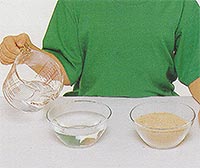
1. Pour water into one bowl and sand into another bowl. You did not need to measure the exact quantities of sand and water-just use roughly equal amounts.

2. Place the bowls side by side in a cool place. leave them for a few hours. Then note the temperature of the sand and water. The temperature of each should be about the same.
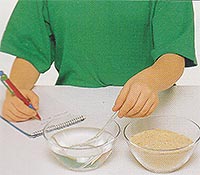
3. Place the bowls side by side in the sunlight. Leave the bowls for an hour or two. Then measure and record the temperatures of the sand and water in the each bowl.
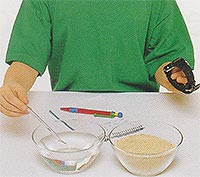
4. Put each bowl in a cool place indoors. Measure and record the temperature of the sand and water every 15 minutes. The sand cools down faster than the water.
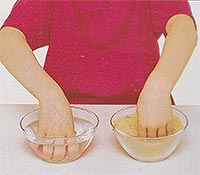
5. In this experiment, the sand acts like land and the water acts like ocean. The sands gets hot quicker, but the water holds its heat longer. Dip your hands in to feel the difference.
Measuring humidity
You will need:
two sheets of colored card, scissors, ruler, pen, glue, toothpick, used matchstick, straw, reusable adhesive, blotting paper, hole punch.
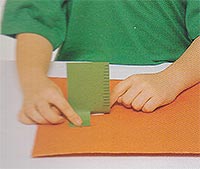
1. Cut out rectangle form card. Mark regular intervals along one side for a scale. Cut a 3/4 inch slit in one short side. Split the parts as shown above, and glue them to a card base.
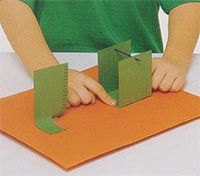
2. Cut another rectangle from the card. Fold it and stick it to the card base as shown above. Pierce the top carefully with a toothpick to make a pivot.
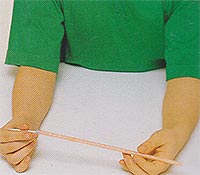
3. Attach the used matchstick to one end of the straw using some reusable adhesive, to make a pointer. Both the matchstick and the adhesive give the pointer some weight.
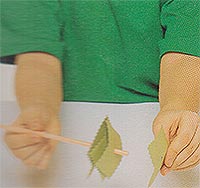
4. Carefully cut out several squares of blotting paper. Use the hole punch to make a hole in the middle of the each square. slide the square over the flat end of the pointer.
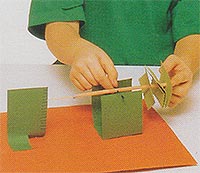
5. Now carefully pierce the pointer with the toothpick pivot. Position the pointer as shown . Make sure that the pointer can swing freely up and down.
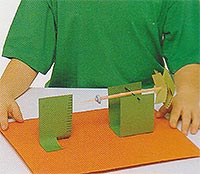
6. Adjust the position of the toothpick so that it stays level. Take the hygrometer into the bathroom and run a bath. the humidity makes the blotting paper damp. The pointer tips upward.
Back to School Projects Main












